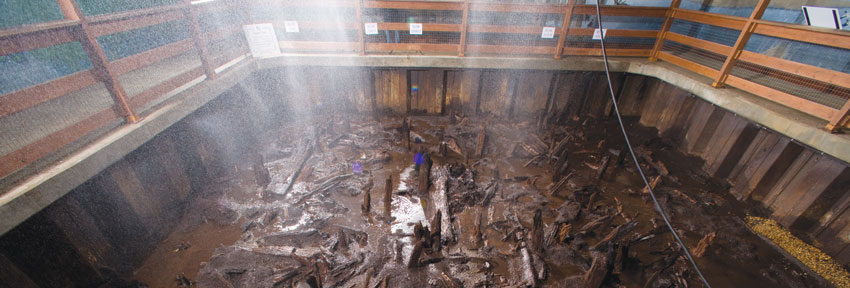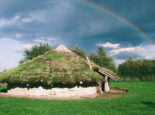Flag Fen | Last chance to see
There’s no shortage of Bronze Age sites in Britain. From Avebury stone circle to the iconic Stonehenge itself, but those sites, and most others that have survived, are made of stone. What makes Flag Fen so unique is that it boasts a wooden structure; a wooden structure that has been preserved for three-and-a-half millennia and, since Sea-henge has now been moved indoors to ensure its preservation, Flag Fen can boast of being the only ‘in-situ’ wooden Bronze Age structure in Britain.
 And it’s big. Really big. A mile-long wooden causeway stretches across the site, made up of some 60,000 vertical timbers and 250,000 horizontal timbers, every one of them bearing the distinctive marks of being worked and shaped with primitive tools. The causeway was constantly added to and enhanced over a period of 400 years, from 1350-900BC, evolving from a relatively simple structure with two rows of posts and a walkway, to a much grander one with five rows of posts and a wattle fence at its northern side. It’s been estimated that over two million trees were felled for use in its construction.
And it’s big. Really big. A mile-long wooden causeway stretches across the site, made up of some 60,000 vertical timbers and 250,000 horizontal timbers, every one of them bearing the distinctive marks of being worked and shaped with primitive tools. The causeway was constantly added to and enhanced over a period of 400 years, from 1350-900BC, evolving from a relatively simple structure with two rows of posts and a walkway, to a much grander one with five rows of posts and a wattle fence at its northern side. It’s been estimated that over two million trees were felled for use in its construction.
At the centre of the causeway is an even more impressive structure – a wooden platform the size of Wembley Stadium, though, sadly, this is not currently visible as an artificial lake has been built over the precious timbers to preserve them. And it’s just as well, because Flag Fen, this marvel of the ancient world, is under serious threat. It may have withstood the rigours of time for three-and-a-half millennia but it’s unlikely that anything will remain of it for our grandchildren to see. ‘The site is drying out’ Francis Pryor says. ‘Certainly there won’t be anything left there in fifty years time, except the platform under the lake. But outside of that, the whole site is drying out.’















